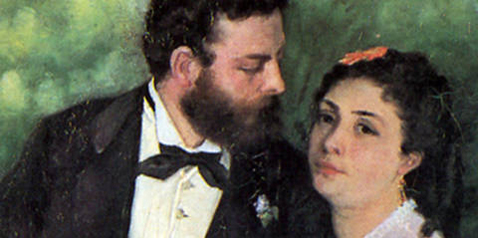
AUGUSTE RENOIR
In the early 1860s, when he was being taught in the Paris studio of the painter Charles Gleyre, Pierre-Auguste Renoir (Limoges 1841–1919 Cagnes) became friends with Claude Monet, Frédéric Bazille and Alfred Sisley; in the years to come, the four artists often painted together in the open air, directly in the presence of the motif. In the middle of the decade Renoir exhibited his work at the Paris Salon. At this time, he was still painting, under the influence of his role model Gustave Courbet, in dark, sober colours. Soon, however, as this influence gave way to that of Monet, he was painting his first Impressionist pictures.
The main works by Monet in this new style date from the mid 1870s; in this period he painted with all the lightness of the Impressionist palette. He also undertook an intensive confrontation with the art of Eugène Delacroix. At the same time he also took a particular interest in Édouard Manet’s depictions of contemporary life. From 1881 – inspired by a trip to Italy – Renoir’s art became influenced by Classicism; he turned away from Impressionism, and constructed his figure paintings more and more from vigorous forms outlined by closed contours. In Renoir’s late period he painted pictures dominated by a relaxed chromatic structure, luminous colours and sensuous expressivity.


